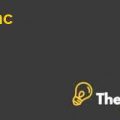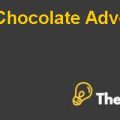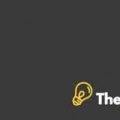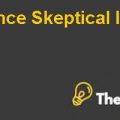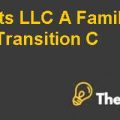
Diageo Plc. Case Solution
1. What does Exhibit 3 suggest is the reason Diageo is selling Pillsbury and spinning off Burger King? What is the beta of Diageo’s stock? Given its beta, how should Diageo’s stock have traded relative to the FTSE index?
What reasons can you think of that would explain Diageo’s stock performance?
Sales of non-core business units
From the exhibit that provides the financial information regarding the turnover and operating profit, the percentage is calculated that is as a base of total turnover or operating profit. It can be seen that Pillsbury is engaged in manufacturing of packaged foods contributes 32% in total turnover and about 25% in the operating profit. Burger king, on the other hand, working as fast food restaurant is contributing only 8% in the total turnover whereas, 10% in operating profit. Form this it is seen that both have lowest contribution than the other divisions. The company has been on the plan to focus on its core businesses and gains competitive advantage in those units. About 60% turnover is from the core business that includes spirit wines, and beer. The company has decided to make innovation and take other strategies to develop its core business and sell off the non-core less contributing business so that all efforts can be made on the core businesses.
| Turnover |
CY 96 PF |
FY 97 PF |
FY 98 |
FY 99 |
FY 00 |
As a percentage of total |
|
| Class of business | |||||||
| Spirits and Wine |
5,830 |
5,692 |
5,327 |
4,929 |
4,971 |
42% |
|
| Beer |
2,262 |
2,259 |
2,176 |
2,234 |
2,146 |
18% |
|
| Packaged Food |
3,784 |
3,755 |
3,654 |
3,757 |
3,812 |
32% |
|
| Restaurants |
877 |
879 |
869 |
875 |
941 |
8% |
|
| Associates and othera |
687 |
400 |
3 |
0 |
0 |
0% |
|
| Total |
13,440 |
12,985 |
12,029 |
11,795 |
11,870 |
100% |
| Operating Profit |
CY 96 PF |
FY 97 PF |
FY 98 |
FY 99 |
FY 00 |
|
|
| Class of business |
|
||||||
| Spirits and Wine |
1,138 |
1,135 |
1,070 |
967 |
1,002 |
51% |
|
| Beer |
254 |
264 |
247 |
273 |
284 |
14% |
|
| Packaged Food |
412 |
423 |
447 |
478 |
492 |
25% |
|
| Restaurants |
161 |
160 |
179 |
185 |
202 |
10% |
|
| Associates and othera |
36 |
21 |
(1) |
0 |
0 |
0% |
|
| Total |
2,001 |
2,003 |
1,942 |
1,903 |
1,980 |
100% |
Exhibit 3 shows that the company’s stock prices has been declining and is much lower than the standard market indices. The prices are below FTSE index. Thus, the company’s group chief executive, Paul Walsh, has decided to focus on the beverages and alcohol drinks and sell off other non-core business and make strategic innovations to gain sustained growth and steady profits.
Stock beta
The stock beta of the company shows 0.55. This is lower than 1, which can be interpreted in a way that the stocks are less volatile as compared to market indices. The higher beta that is higher than 1 means that highly volatility of the stock and lower beta that is lower than 1 means less volatility. This also implies that the stock of the company is less risky with beta of less than 1. The fluctuation in the stock prices of the company as per data given in exhibit 3 is not in line with what should be as per beta value. The stock process should perform in line with market trend however; it fluctuates more maybe due to some other reasons.............
This is just a sample partial case solution. Please place the order on the website to order your own originally done case solution.


